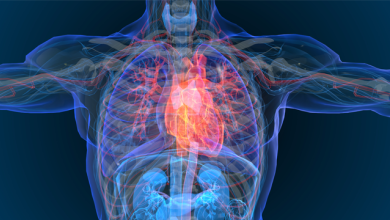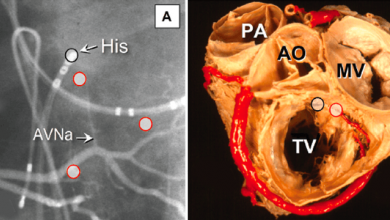Search results
Author(s):
Nadine Ali
,
Daniel Keene
,
Ahran D Arnold
,
et al
Added:
3 years ago
His bundle pacing in humans was first described in 1970 by Narula et al.1 They demonstrated that it was possible to stimulate the His bundle to produce normal physiological ventricular activation via the His-Purkinje system. However, the first report of permanent His bundle pacing, by Deshmukh et al., did not occur until 2000.2 In that study, His pacing was performed in a series of patients with…
View more
Update in Cardiac Pacing
Author(s):
Nishant Verma
,
Bradley P Knight
Added:
3 years ago
Article
Conduction System Pacing
Author(s):
Ahran D Arnold
,
Zachary I Whinnett
,
Pugazhendhi Vijayaraman
Added:
3 years ago
Article
Author(s):
Parikshit S Sharma
,
Pugazhendhi Vijayaraman
Added:
3 years ago
Author(s):
Alexandre Raymond-Paquin
,
Santosh K Padala
,
Kenneth A Ellenbogen
Added:
2 years ago
Author(s):
Theodoros A Zografos
Added:
3 years ago
Dear Sir,
I read with great interest the elegant article by Ali et al.1 on His bundle pacing in issue 17.2 of AER. I do concur with the authors’ view and conclusions. However, there are two issues that may merit further attention.
First, specific His-bundle pacing is indeed the reasonable option that mimics the natural ventricular excitation. However, no benefit of mid-septal over apical pacing…
View more
Author(s):
Fatima M Ezzeddine
,
Isaac G Leon
,
Yong-Mei Cha
Added:
8 months ago
Author(s):
Angelo Auricchio
Added:
3 years ago
Despite the fact that more than 20 years have passed since the clinical introduction of cardiac resynchronisation therapy (CRT), one of the key questions – do we need an ICD for primary prevention of sudden cardiac death (SCD) in CRT patients? – is still unanswered.
Prospective Randomised Controlled Trials
Multiple prospective randomised controlled trials have been conducted to establish the…
View more
Author(s):
Demosthenes G Katritsis
Added:
3 years ago
The ideal pacing site in the ventricle(s) of patients with atrioventricular (AV) block has been debated for years. Despite considerable technological advances, the optimal ventricular pacing site to mimic normal human ventricular physiology and attain the best haemodynamic response remains elusive.1
Prolonged ventricular dyssynchrony induced by long-term right ventricular (RV) apical pacing is…
View more
Author(s):
José-Ángel Cabrera
,
Robert H Anderson
,
Andreu Porta-Sánchez
,
et al
Added:
2 years ago














